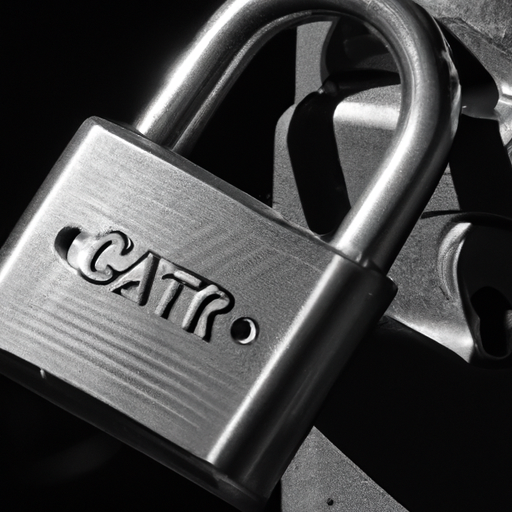How Do We Ensure Data Integrity During Recovery Operations?
In the world of data recovery, the utmost priority is ensuring the integrity of the information being recovered. It is crucial to maintain the accuracy, consistency, and security of the data throughout the entire recovery process. This article explores the various methods and measures taken to guarantee data integrity during recovery operations, providing valuable insights for anyone dealing with data loss and the subsequent recovery efforts.
Understanding the Importance of Data Integrity
When it comes to managing and securing data, ensuring its integrity is of paramount importance. Data integrity refers to the accuracy, consistency, and reliability of data throughout its lifecycle. In the context of recovery operations, data integrity ensures that the data being recovered is complete and accurate, without any corruption or loss.
Defining Data Integrity
Data integrity can be defined as the assurance that data remains intact and unchanged throughout its lifecycle, including storage, transmission, and processing. It involves maintaining the accuracy, consistency, and reliability of data, ensuring that it continues to reflect the intended information. Data integrity is crucial in recovery operations, as any loss or corruption of data can have severe consequences, ranging from financial losses to compromised business operations.
The Role of Data Integrity in Recovery Operations
Data integrity plays a vital role in recovery operations as it ensures that the recovered data is complete and accurate, enabling businesses to resume their operations without any disruptions. During a recovery process, various challenges can arise that may compromise data integrity, such as hardware failures, data corruption, and human error. Implementing data backup strategies, utilizing redundancy and resilience, ensuring secure storage and transmission, implementing strong access controls, establishing data recovery plans, using data validation techniques, training personnel, and monitoring data integrity issues are all essential aspects of maintaining data integrity during recovery operations.
Challenges in Maintaining Data Integrity
Maintaining data integrity during recovery operations poses several challenges that organizations must be aware of and overcome. These challenges include hardware and software failures, data corruption and loss, and human error. Addressing these challenges is crucial to ensure the integrity of recovered data.
Hardware and Software Failures
Hardware and software failures are common challenges that organizations face regularly. Whether it is a malfunctioning hard drive, a server crash, or a software glitch, these failures can lead to data corruption or loss if not appropriately addressed. To mitigate the risk of data integrity issues arising from these failures, organizations must implement robust backup and recovery solutions, such as redundant storage systems and backup servers, that can quickly restore data in case of a failure.
Data Corruption and Loss
Data corruption and loss are significant threats to data integrity during recovery operations. Corruption can occur due to various reasons, such as software bugs, viruses, or power outages, resulting in data becoming unreadable or unusable. Loss of data can happen due to accidental deletion, hardware failure, or natural disasters. Implementing regular and automated backup processes, along with data validation and verification techniques, can help organizations identify corrupted or lost data and recover it effectively.
Human Error
Human error is another challenge that can negatively impact data integrity during recovery operations. Mistakenly deleting important files, overwriting data, or improperly configuring backup and recovery processes are all examples of human errors that can lead to data loss or corruption. To minimize human error, organizations must provide proper training and education to their personnel, emphasizing the importance of data integrity and teaching them best practices for data recovery processes.
Implementing Data Backup Strategies
Implementing an effective data backup strategy is crucial for maintaining data integrity during recovery operations. By choosing the right backup solution, implementing regular and automated backup processes, and conducting testing and validation procedures, organizations can ensure that their data is protected and recoverable.
Choosing the Right Backup Solution
Selecting the most suitable backup solution is the first step in implementing a data backup strategy. Different businesses have unique needs and requirements, so it is essential to consider factors such as the size of the data, the recovery time objectives, and the budget when choosing a backup solution. Options range from physical backups, such as tape drives or external hard drives, to cloud-based backups that offer scalability and flexibility.
Regular and Automated Backup Processes
Regular and automated backup processes are vital to avoid data loss and corruption. By scheduling backups at regular intervals, organizations can ensure that their data is continuously protected. Automating this process further reduces the risk of human error and ensures consistency in backup procedures. Additionally, organizations must consider the recovery point objectives (RPO) and recovery time objectives (RTO) when designing their backup processes to determine how frequently data should be backed up and how quickly it needs to be recovered.
Testing and Validation Procedures
Testing and validation procedures are essential to verify the integrity and reliability of backups and ensure that they can be successfully restored during recovery operations. Regularly testing backups by attempting to restore the data and validating its integrity helps identify any potential issues or errors. This allows organizations to address any data integrity issues promptly and take corrective measures to ensure the effective recovery of data when needed.
Utilizing Redundancy and Resilience
To enhance data integrity during recovery operations, organizations can utilize redundancy and resilience strategies. These strategies involve implementing redundant systems, such as RAID (Redundant Array of Independent Disks), online mirroring, and disk and network redundancy, as well as adopting high availability architectures.
RAID (Redundant Array of Independent Disks)
RAID, or Redundant Array of Independent Disks, is a technology that combines multiple hard drives into a single logical unit to improve performance, reliability, and data integrity. Different RAID levels offer varying levels of redundancy and protection against data loss. By implementing RAID, organizations can ensure that even if one disk fails, the data can still be accessed, reducing the risk of data loss and downtime.
Online Mirroring
Online mirroring, also known as disk mirroring or RAID 1, involves creating an identical copy of data on two or more disks simultaneously. This redundancy allows for immediate access to data if one of the disks fails. Online mirroring provides real-time data protection and minimizes the risk of data corruption or loss during recovery operations.
Disk and Network Redundancy
Implementing disk and network redundancy helps ensure data integrity by providing backup mechanisms in case of hardware or network failures. By using redundant disks or network infrastructure, organizations can maintain continuous access to data and eliminate single points of failure. Reducing the risk of hardware or network failures significantly enhances data integrity during recovery operations.
High Availability Architectures
High availability architectures are designed to maximize uptime and ensure uninterrupted access to critical data and applications. These architectures incorporate redundant components and failover mechanisms to mitigate the impact of hardware or software failures. By utilizing high availability architectures, organizations can maintain data integrity by quickly recovering from failures and minimizing downtime.
Ensuring Secure Storage and Transmission
Protecting data during storage and transmission is essential to maintaining its integrity and preventing unauthorized access or tampering. By implementing data encryption, using secure backup locations, establishing secure network connections, and securing data during transfer, organizations can enhance data integrity during recovery operations.
Data Encryption
Data encryption is a crucial aspect of data security and integrity. By encrypting data before storing or transmitting it, organizations can ensure that it remains protected even if it falls into unauthorized hands. Encryption converts data into an unreadable format that can only be decrypted with the appropriate encryption keys, providing an extra layer of protection against data breaches and ensuring data integrity.
Secure Backup Locations
Choosing secure backup locations is essential to protect data from physical threats, such as theft, fire, or natural disasters. Backup locations should be geographically separate from the primary data storage location to ensure that if one location is compromised, the data can be restored from the backup. Secure backup locations can include off-site data centers, cloud-based storage, or even secure physical storage facilities.
Secure Network Connections
Establishing secure network connections is crucial when transmitting data between different locations or systems. Utilizing virtual private networks (VPNs) or secure file transfer protocols (SFTPs) can help encrypt data and ensure its integrity during transmission. By securing network connections, organizations can prevent unauthorized access or interception of data, minimizing the risk of data integrity issues during recovery operations.
Securing Data During Transfer
During the transfer of data, organizations must ensure that measures are in place to protect it from unauthorized access, tampering, or loss. Implementing secure protocols, such as SSL/TLS, for data transfer processes ensures that data remains encrypted and its integrity is maintained. Additionally, organizations should employ access controls and authentication mechanisms to restrict access to data during transfer, reducing the risk of data integrity issues.
Implementing Strong Access Controls
Implementing strong access controls is crucial for maintaining data integrity during recovery operations. By ensuring proper user authentication and authorization, implementing role-based access control, and conducting security auditing and monitoring, organizations can protect data from unauthorized access and mitigate the risk of data integrity breaches.
User Authentication and Authorization
User authentication and authorization are fundamental aspects of access control. By implementing strong authentication mechanisms, such as multi-factor authentication, organizations can verify the identity of users accessing the data during recovery operations. Authorization mechanisms and user roles can be employed to restrict access privileges to specific individuals or groups, further ensuring that only authorized personnel can manipulate or access sensitive data.
Role-Based Access Control
Role-based access control (RBAC) is a widely used access control model that assigns specific roles to users based on their responsibilities and grants access privileges accordingly. By implementing RBAC, organizations can ensure that individuals have the necessary permissions to perform their duties during recovery operations while preventing unauthorized access to sensitive data. Utilizing RBAC simplifies access management and helps maintain data integrity by controlling who can access and modify data.
Security Auditing and Monitoring
Security auditing and monitoring are vital for detecting and preventing data integrity breaches during recovery operations. By regularly auditing access logs and monitoring system activities, organizations can detect unauthorized access attempts or suspicious activities. Real-time monitoring systems can provide alerts for potential data integrity issues, enabling timely response and mitigation actions. Security auditing and monitoring help organizations identify and address any vulnerabilities or weaknesses in their access controls, enhancing data integrity.
Establishing Data Recovery Plans
Having well-defined data recovery plans is crucial for maintaining data integrity during recovery operations. By defining recovery objectives, creating a recovery team, and regularly testing and updating recovery plans, organizations can ensure the effective recovery of data while minimizing the risk of data integrity issues.
Defining Recovery Objectives
Defining recovery objectives is the first step in establishing a data recovery plan. Organizations should determine the Recovery Point Objective (RPO), which specifies the acceptable amount of data loss during recovery, and the Recovery Time Objective (RTO), which determines the maximum acceptable downtime. By clearly defining these objectives, organizations can align their recovery efforts with business requirements and ensure that data integrity is maintained.
Creating a Recovery Team
Creating a dedicated recovery team is critical for the successful execution of data recovery plans. The recovery team should consist of personnel with appropriate knowledge and expertise in data recovery processes. This team will be responsible for executing recovery procedures, managing data integrity, and coordinating recovery efforts with other stakeholders. By having a designated recovery team, organizations can minimize the risk of data integrity issues during the recovery operations.
Testing and Updating Recovery Plans
Regular testing and updating of recovery plans are essential to ensure that they remain effective and aligned with the evolving business needs. By regularly conducting planned exercises or simulations, organizations can test the effectiveness of their recovery plans and identify any potential gaps or weaknesses. Based on the test results, recovery plans can be updated and refined to improve data integrity and enhance the recovery capabilities.
Using Data Validation and Verification Techniques
Data validation and verification techniques are vital for verifying the integrity and accuracy of recovered data. By utilizing checksums and hashing, performing data scrubbing, and employing data validation tools, organizations can ensure that the recovered data is complete, accurate, and free from corruption.
Checksums and Hashing
Checksums and hashing algorithms are commonly used techniques to verify the integrity of data. Checksums calculate a unique value based on the data being transmitted or stored, which can be compared at the receiving end to ensure that the data has not been corrupted during the transfer or recovery process. Hashing algorithms generate a fixed-size string of characters (hash) that represents the content of the data. By comparing the hashes before and after recovery, organizations can verify the integrity of the recovered data.
Data Scrubbing
Data scrubbing, or data cleansing, is a process that identifies and corrects errors or inconsistencies in data. By performing data scrubbing on recovered data, organizations can eliminate any potential data integrity issues caused by incorrect or inconsistent data. Data scrubbing techniques can include removing duplicate data, standardizing formats, and correcting errors, ensuring that the recovered data is accurate and reliable.
Data Validation Tools
Utilizing data validation tools can simplify and automate the process of verifying data integrity during recovery operations. These tools perform various checks, comparisons, or calculations to identify any data inconsistencies or errors. Data validation tools can also detect data duplications, missing values, or formatting issues, ensuring that the recovered data meets the required standards and is suitable for further processing or use.
Training and Educating Personnel
Training and educating personnel is crucial for fostering a culture of data integrity and equipping employees with the necessary skills and knowledge to effectively perform recovery operations. By raising awareness about the importance of data integrity, providing training in data recovery processes, and promoting cybersecurity best practices, organizations can minimize the risk of data integrity issues caused by human error.
Awareness of Data Integrity Importance
Creating awareness about the importance of data integrity among employees is essential for building a culture that emphasizes data protection. Organizations should communicate the potential consequences of data integrity breaches, such as financial losses, reputational damage, or legal issues. By illustrating the impact that data integrity has on business operations, employees are more likely to prioritize data protection and make informed decisions during recovery operations.
Training in Data Recovery Processes
Providing training in data recovery processes is essential to ensure that personnel understand and follow the correct procedures for recovering data while maintaining its integrity. Training should cover topics such as backup and recovery techniques, data validation procedures, and security best practices. By equipping personnel with the necessary skills, organizations can reduce the risk of data integrity issues caused by improper recovery procedures.
Cybersecurity Best Practices
Cybersecurity best practices play a significant role in maintaining data integrity during recovery operations. Training personnel on topics such as password hygiene, email security, and secure browsing can help mitigate the risk of data breaches or unauthorized access. By incorporating cybersecurity best practices into their daily routines, employees can contribute to maintaining data integrity and preventing potential security incidents.
Monitoring and Detecting Data Integrity Issues
Real-time monitoring and proactive error detection are crucial for identifying and mitigating data integrity issues as they arise. By implementing real-time monitoring systems, automated integrity checks, and proactive error detection mechanisms, organizations can detect and address data integrity issues promptly.
Real-time Monitoring Systems
Real-time monitoring systems continuously monitor various aspects of the IT infrastructure to detect anomalies or deviations from normal operations. By monitoring metrics such as disk usage, network traffic, or system logs, organizations can identify potential issues that may impact data integrity. Real-time monitoring systems can generate alerts or notifications, enabling quick response and preventing data integrity issues from escalating.
Automated Integrity Checks
Automated integrity checks involve regularly testing the integrity of data and detecting any anomalies or inconsistencies. By comparing checksums, validating data formats, or performing data scrubbing automatically, organizations can identify potential data integrity issues without manual intervention. Automated integrity checks minimize the risk of human error and ensure consistent and timely detection of data integrity issues.
Proactive Error Detection
Proactively detecting data integrity issues involves continuously monitoring system activities, logs, and user behaviors to identify patterns or indicators that may signal a potential integrity breach. By implementing proactive error detection mechanisms, such as anomaly detection algorithms or intrusion detection systems, organizations can identify and respond to potential data integrity issues before they escalate. Proactive error detection helps minimize the impact of data integrity breaches and allows organizations to take corrective actions promptly.
In conclusion, the importance of data integrity during recovery operations cannot be overstated. By understanding the challenges in maintaining data integrity, implementing effective data backup strategies, utilizing redundancy and resilience, ensuring secure storage and transmission, implementing strong access controls, establishing data recovery plans, using data validation techniques, training personnel, and monitoring data integrity issues, organizations can ensure that their recovered data is complete, accurate, and reliable. Prioritizing data integrity not only safeguards critical information but also helps businesses maintain continuity and protect their reputation in the face of unforeseen events or disasters.








